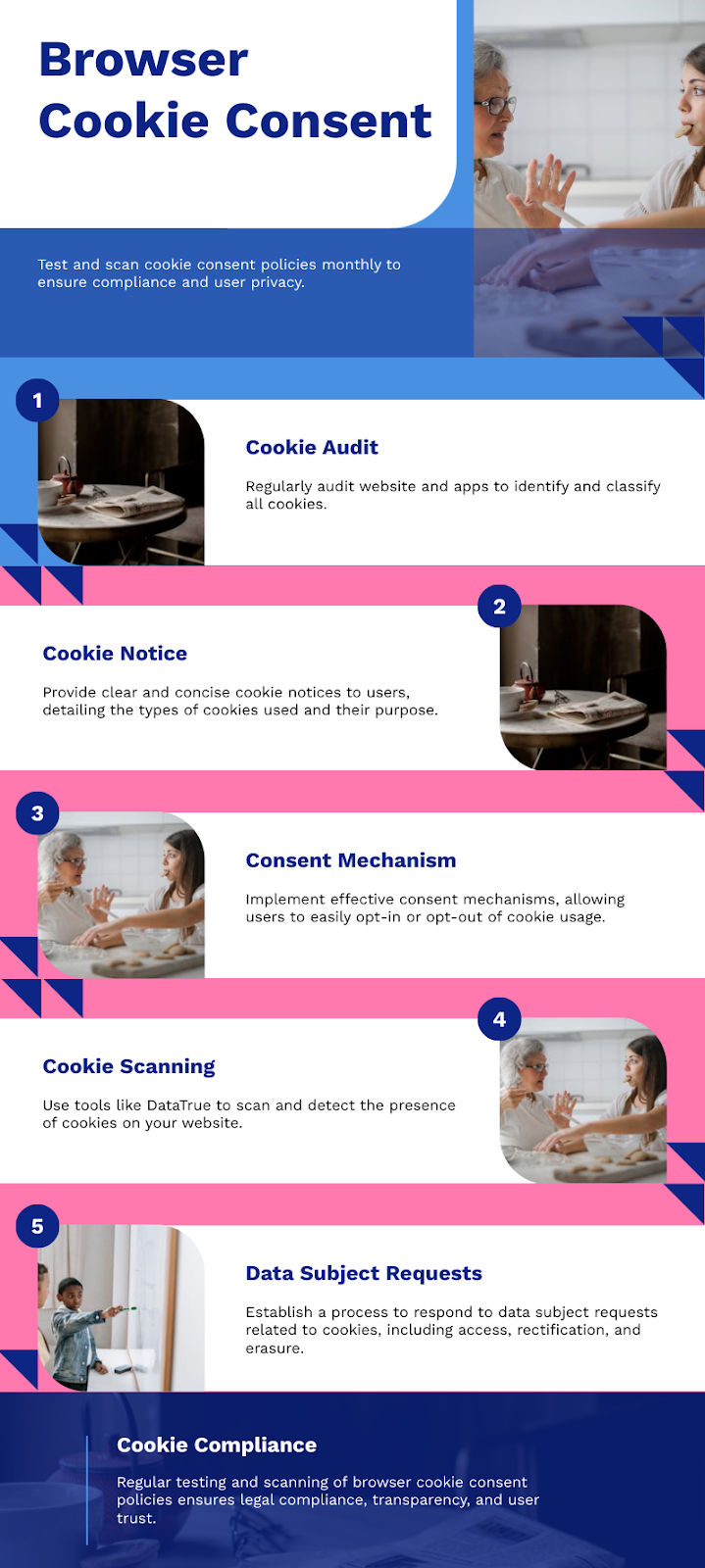Understanding Cookie Consent Banners
Why cookie consent banners matter
Cookie consent banners are an essential component of data privacy compliance for websites. They serve two main purposes:
- Informing Users: The banner informs website visitors that the site uses cookies and other tracking technologies to collect their personal data.
- Obtaining Consent: The banner allows visitors to provide their consent (or decline) for the collection and use of their data through cookies and other trackers.
Cookie consent banners are required by various data privacy laws around the world, including the EU’s General Data Protection Regulation (GDPR), the California Consumer Privacy Act (CCPA), and Brazil’s General Data Protection Law (LGPD). These laws mandate that websites obtain user consent before collecting personal data through cookies and other tracking technologies.
Failing to comply with these regulations can result in hefty fines and penalties. For example, under the GDPR, organizations can be fined up to 4% of their global annual revenue or €20 million, whichever is greater, for violations related to cookie consent.
Beyond legal compliance, cookie consent banners also help build trust with website visitors by being transparent about data collection practices. This can improve user experience and engagement on the site.
Ensuring Compliance with Cookie Consent Banners
To ensure your cookie consent banner is compliant with data privacy laws, consider the following best practices:
- Provide Clear and Comprehensive Information: The banner should clearly explain what cookies are being used, for what purposes, and how users can manage their cookie preferences. Include a link to your website’s privacy policy.
- Obtain Explicit Consent: The banner should require users to actively opt-in by clicking a button or checkbox to consent to cookie usage. Pre-checked boxes or implied consent are not sufficient.
- Offer Granular Control: Allow users to customize their cookie preferences by providing options to accept or decline different categories of cookies (e.g., essential, analytics, marketing).
- Make it Prominent and Accessible: The cookie consent banner should be visually prominent and easy to find on the website. It should also be accessible on all pages and devices.
- Continuously Monitor and Optimize: Regularly test and optimize the cookie consent banner to ensure it remains compliant and user-friendly as regulations and user expectations evolve.
By following these best practices, you can ensure your website’s cookie consent banner meets the requirements of relevant data privacy laws and provides a transparent and user-friendly experience for your visitors.

